The Caro-Kann Defense is a solid and careful opening Black can use to combat the king’s pawn opening (1. e4).
Its origins can be traced back to the early 1880s when Horatio Caro, an English chess player, and Marcus Kann, an Austrian chess master, independently explored the opening.
Notable players like Aron Nimzowitsch and Jose Raul Capablanca began to incorporate it into their repertoire, which contributed to its further development and adoption by other chess enthusiasts.
The opening starts with 1. e4 c6.
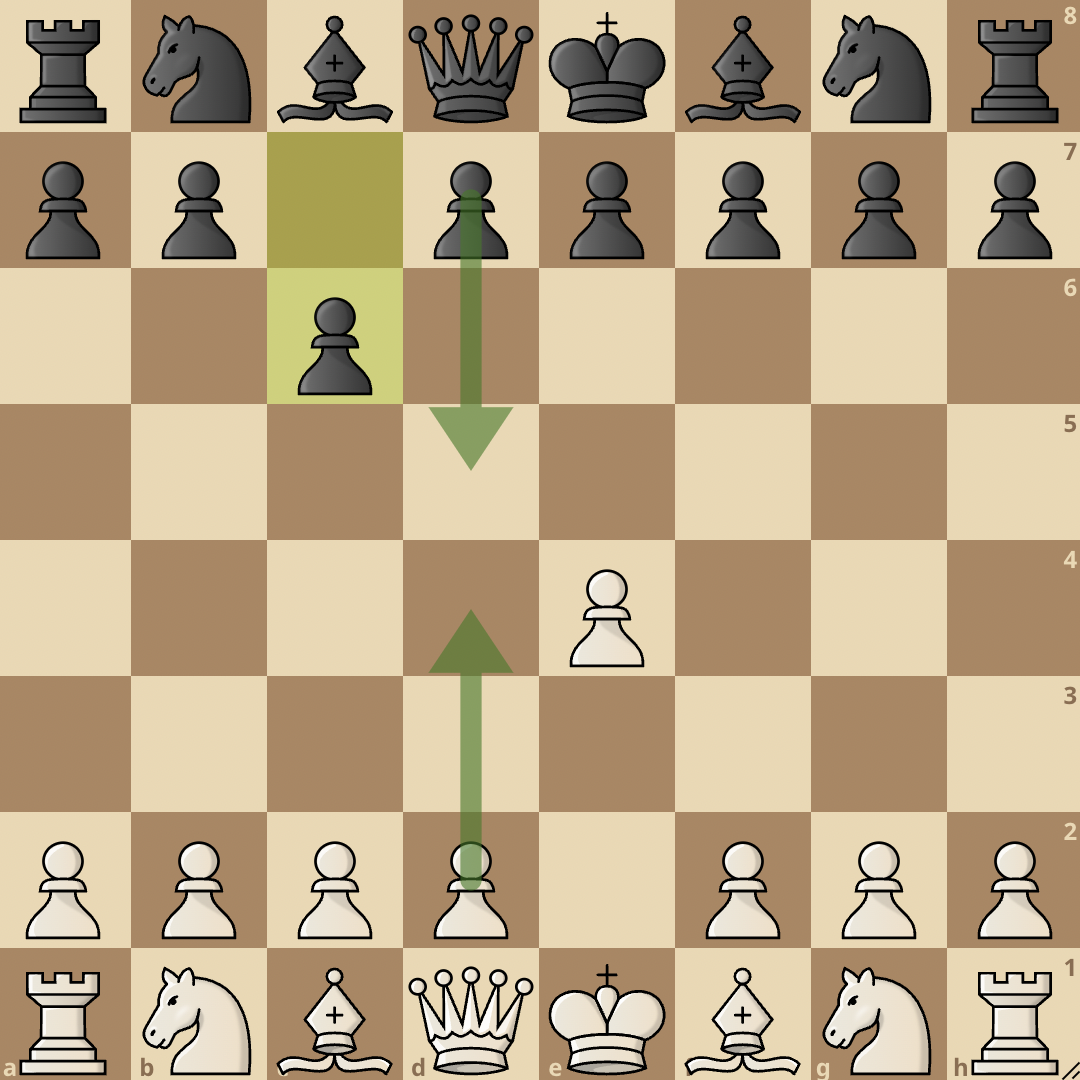
By playing c6, Black temporarily gives up the center in exchange for easier development, they will then look to play …d5 and undermine White’s influence in the center of the board.
After 1…c6, the major continuation for White is to play 2. d4. By playing d4, White grabs hold of a lot of space in the center of the board. Black then immediately attacks the center with 2…d5.
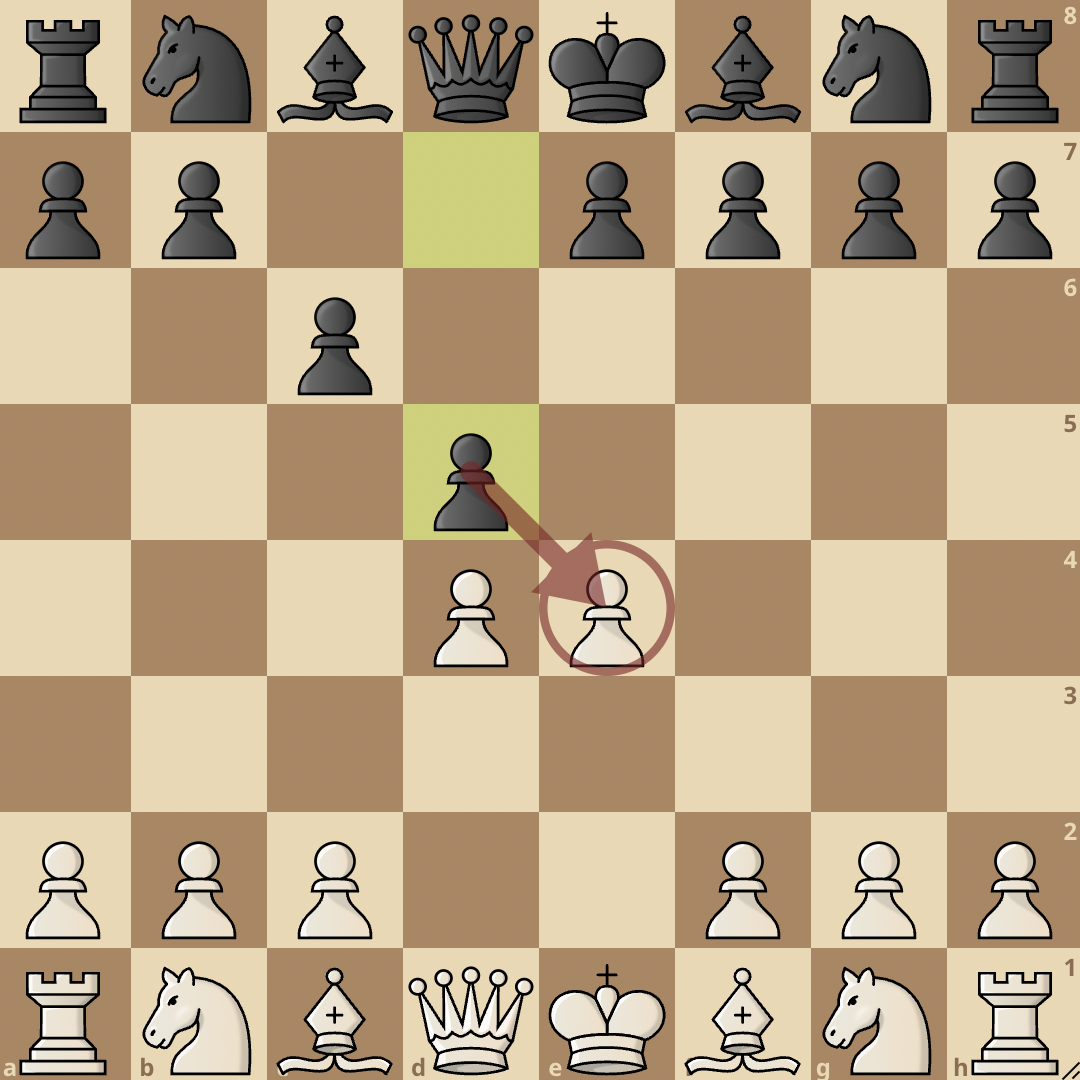
One advantage of the Caro-kann is that it leads to excellent endgames for Black since Black gets a very good pawn structure.
From here, White has a few lines they can go for:
- The Exchange Variation
- The Classical Variation
- The Advance Variation
The Exchange Variation
1. e4 c6 2. d4 d5 3. exd5 cxd5
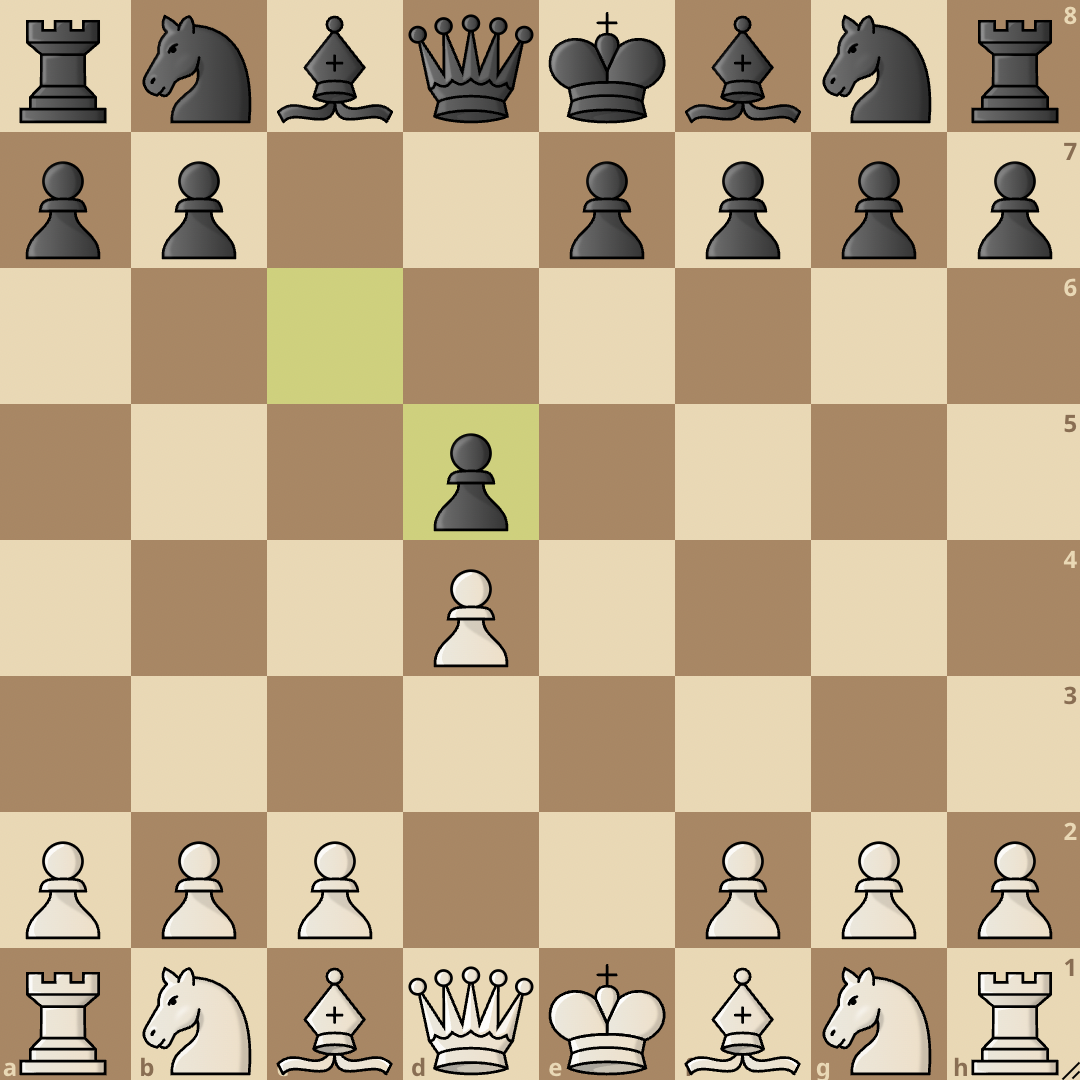
In the exchange variation, White goes for an early capture in the center with 3. exd5.
By playing exd5, White relives all the tension in the center and gives Black a chance to equalize in the game. Black will reply with cxd5.
The pawn structure here looks symmetrical and there’s little prospect of creating positional imbalances that can lead to advantages for either side.
The board is wide open and both sides can easily develop their pieces without worrying about any hidden tactic or plans that the opponent might have.
The Classical Variation
1. e4 c6 2. d4 d5 3. Nc3
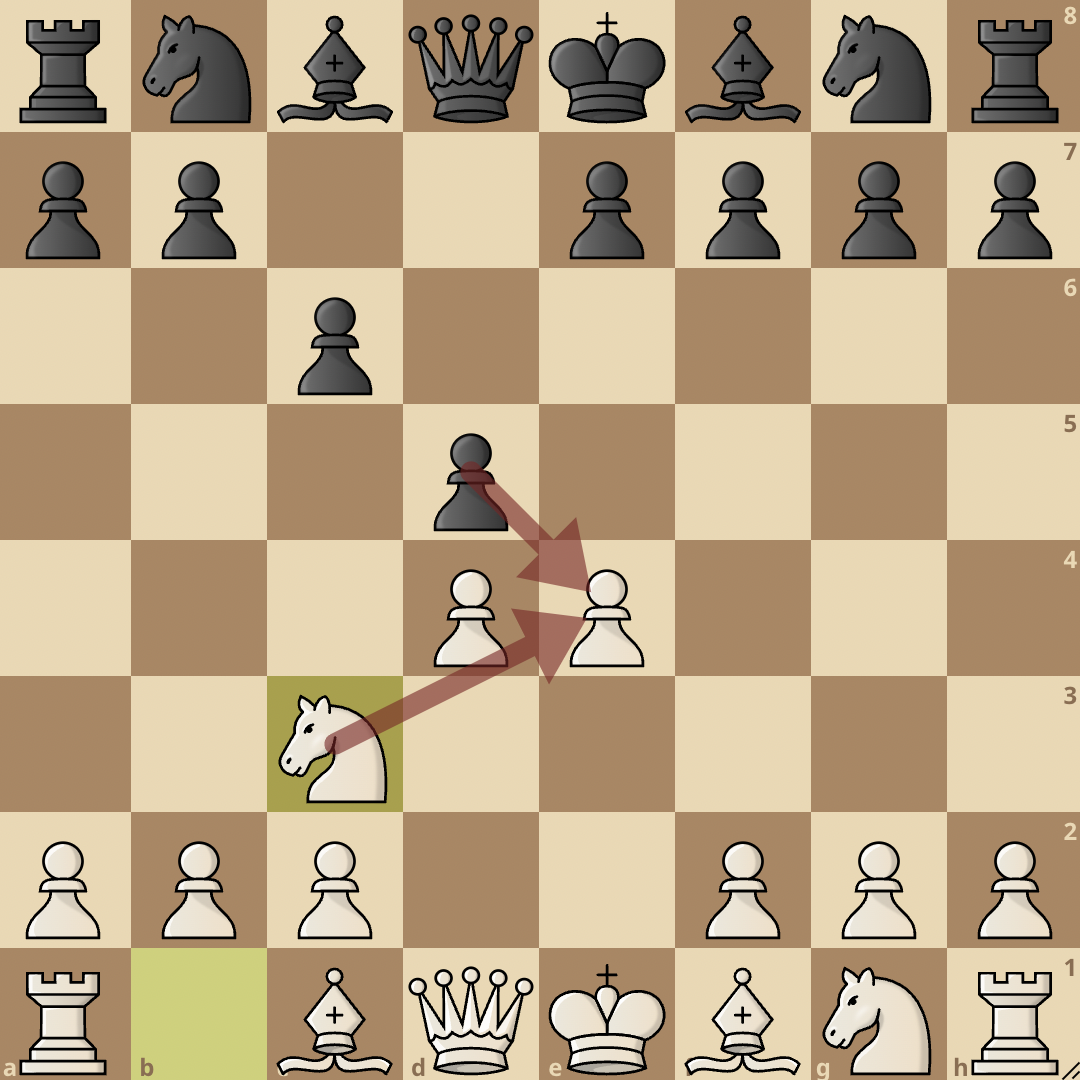
The most popular reply to …d5 is for White to play 3. Nc3. This is known as the classical variation.
Black can respond with …Nf6, …e6, or …dxe4, however, 3…dxe4 is the best move as Nf6 and e6 do not give Black any significant advantage or improve their position.
If Black plays …Nf6, White will advance their pawn to e5 and force the knight to move. This will result in Black losing a tempo as they already moved the knight twice in the opening without any advantage gained. Playing …e6 also locks in Black’s light-squared bishop. Therefore, 3…dxe4 is the way to go for Black.
The game then continues with White capturing the e4 pawn with 4. Nxe4. After the knight captures the pawn, Black can choose from any one of the three continuations. They are: …Nd7 …Bf5 and …Nf6.
4…Nd7
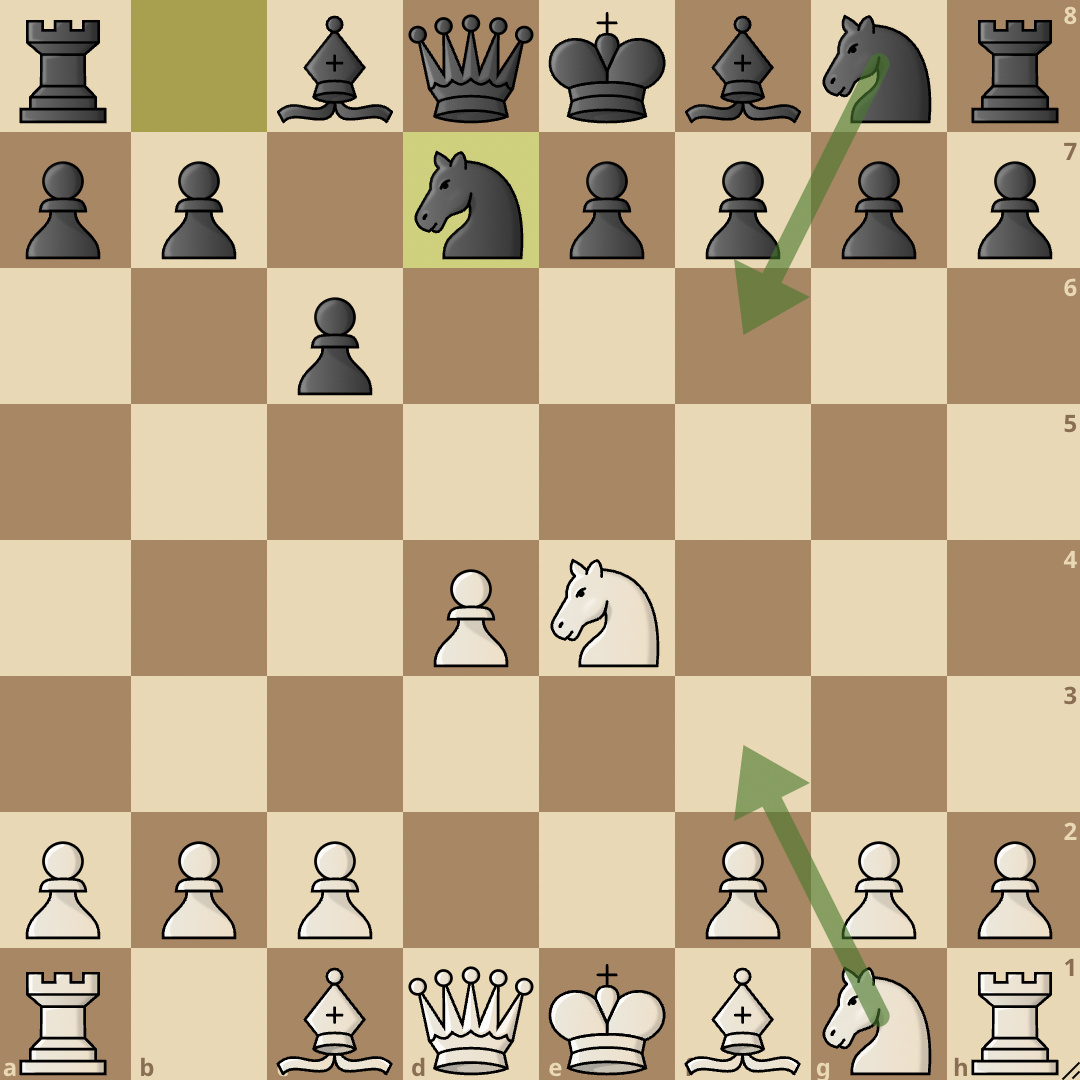
4…Nd7 is a popular continuation for Black in the classical variation. Here, Black tries to trade knights and exchange their knight with White’s very active knight on e4.
The game continues with White playing 5. Nf3 and Black plays 5…Ngf6. Both sides then trade knights with 6. Nxf6+ Nxf6.
The game then continues with both sides looking to develop their pieces to active squares and gain an advantage in the position.
A cool trick White can play in this line is to play 5. Qe2 after Black plays 4…Nd7. Black has to be very careful here and play 5. Ndf6.
However, if they make the mistake of playing 5…Ngf6, they will lose the game as 6. Nd6# comes with checkmate.

The queen from e2 pins the e7 pawn and the Black king does not have an escape route.
4…Bf5
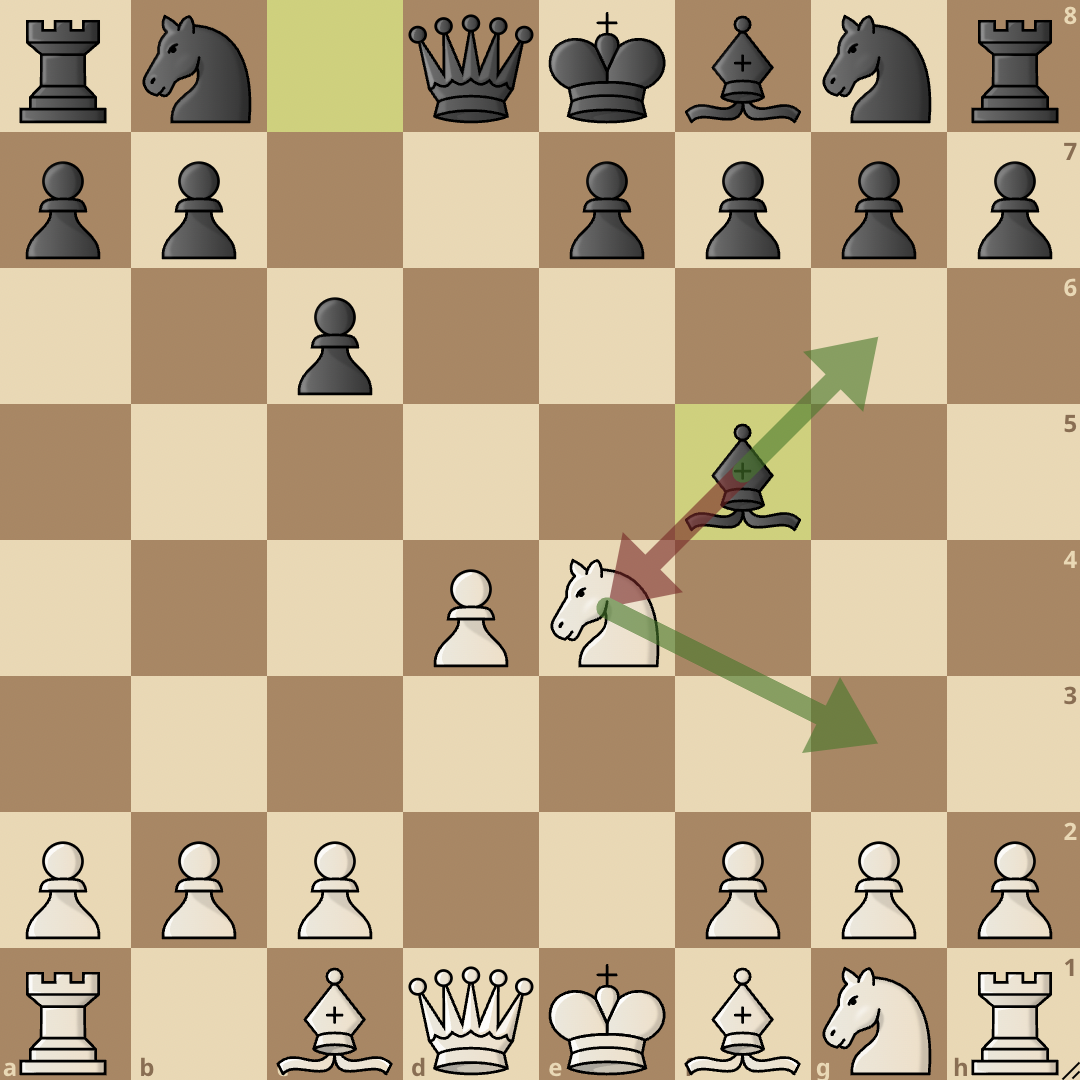
Another line Black can go for is 4…Bf5. By playing Bf5, Black develops their bishop with an attack on the White knight.
White moves the knight away from harm with 5. Ng3 and this also comes with an attack on the bishop. Black has to move the bishop and they choose to play 5…Bg6.
White then plays 6. h4, with the intent of trapping the bishop. Black cannot allow this so they create a retreat square for their bishop with 6…h6. White then develops with 7. Nf3.
If White is given the chance, they would love to bring their knight to the e5 square, so Black plays 7…Nd7 and guards the square.
White then attacks the bishop with 8. h5 and Black moves it back to the retreat square they created earlier with 8…Bh7.
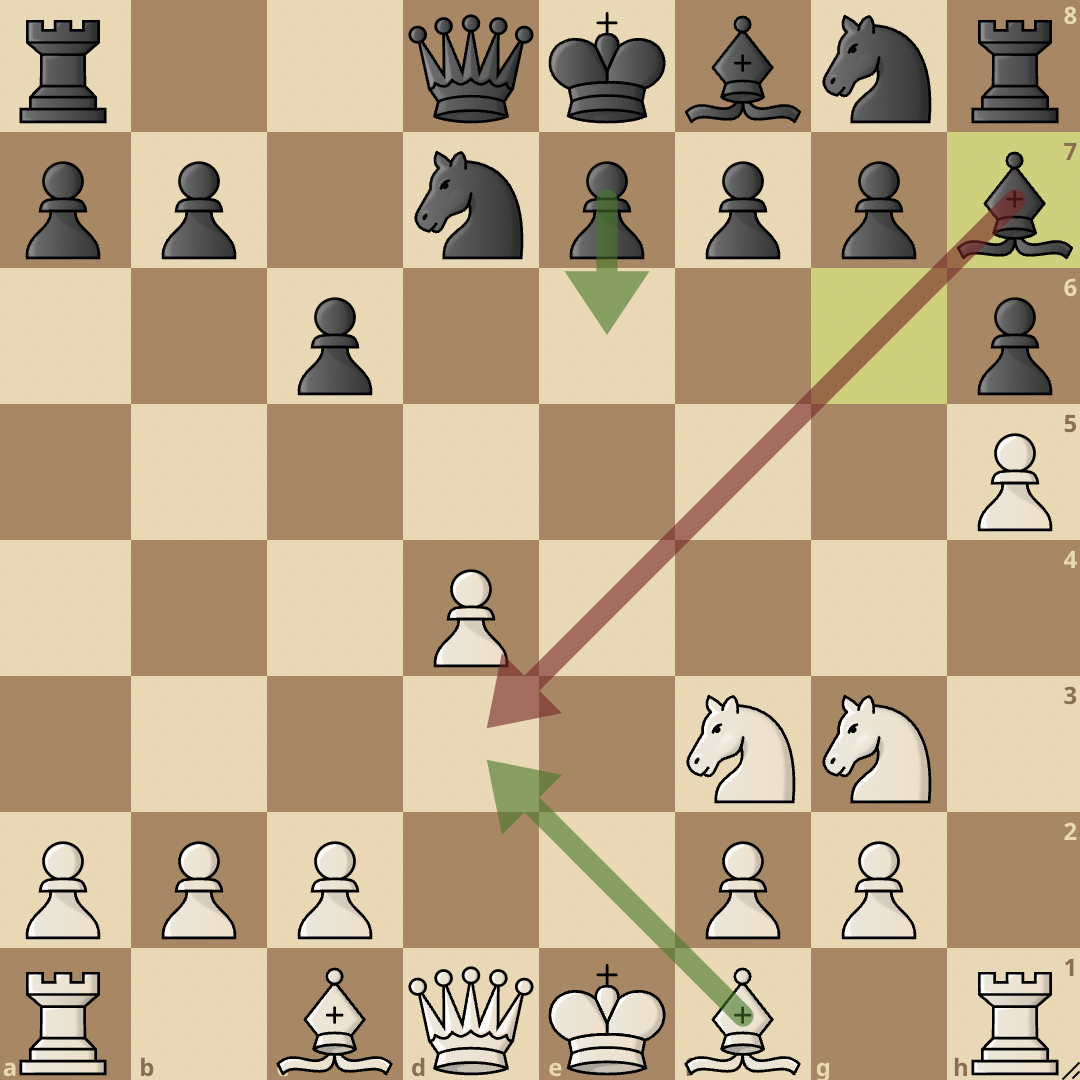
White then offers a bishop trade with 9. Bd3 and after both bishops have been traded off, Black plays 10…e6 and the game continues.
4…Nf6
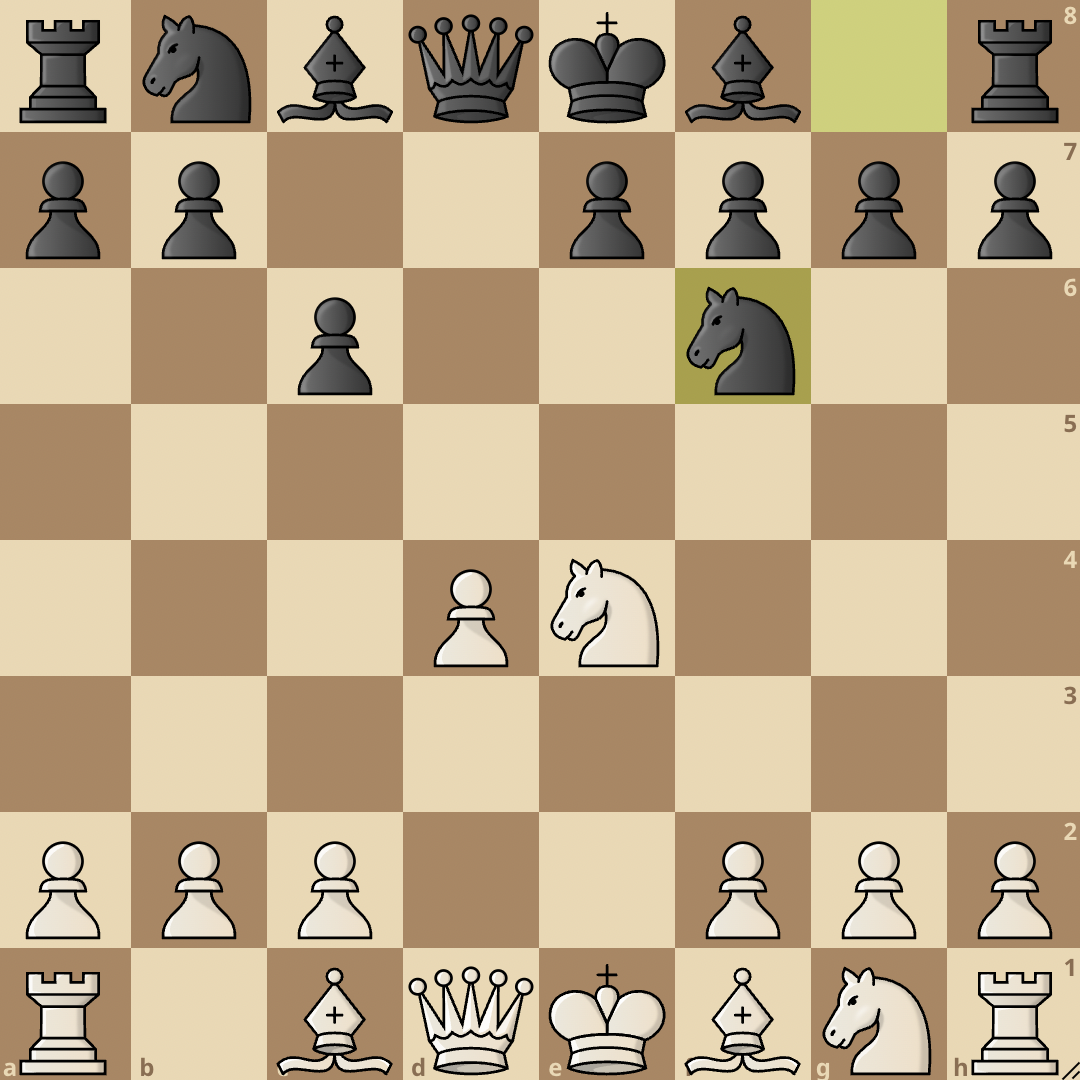
The third option Black has after 4. Nxe4 is to play 4…Nf6 and offer to trade knights. The knight trade will happen with 5. Nxf6 exf6.
5…gxf6 is also a very playable option, however, it exposes Black kingside much more. On the other hand, it allows Black to gain a lot of space.
Whether a player chooses …exf6 or …gxf6 depends on what style they are comfortable playing.
The Advance Variation
1. e4 c6 2. d4 d5 3. e5

As the name suggests, in the Advance variation, White will advance their pawn with 3. e5 intending to control more space.
Black has two main continuations in this position, and they are …Bf5 and…c5
3…Bf5
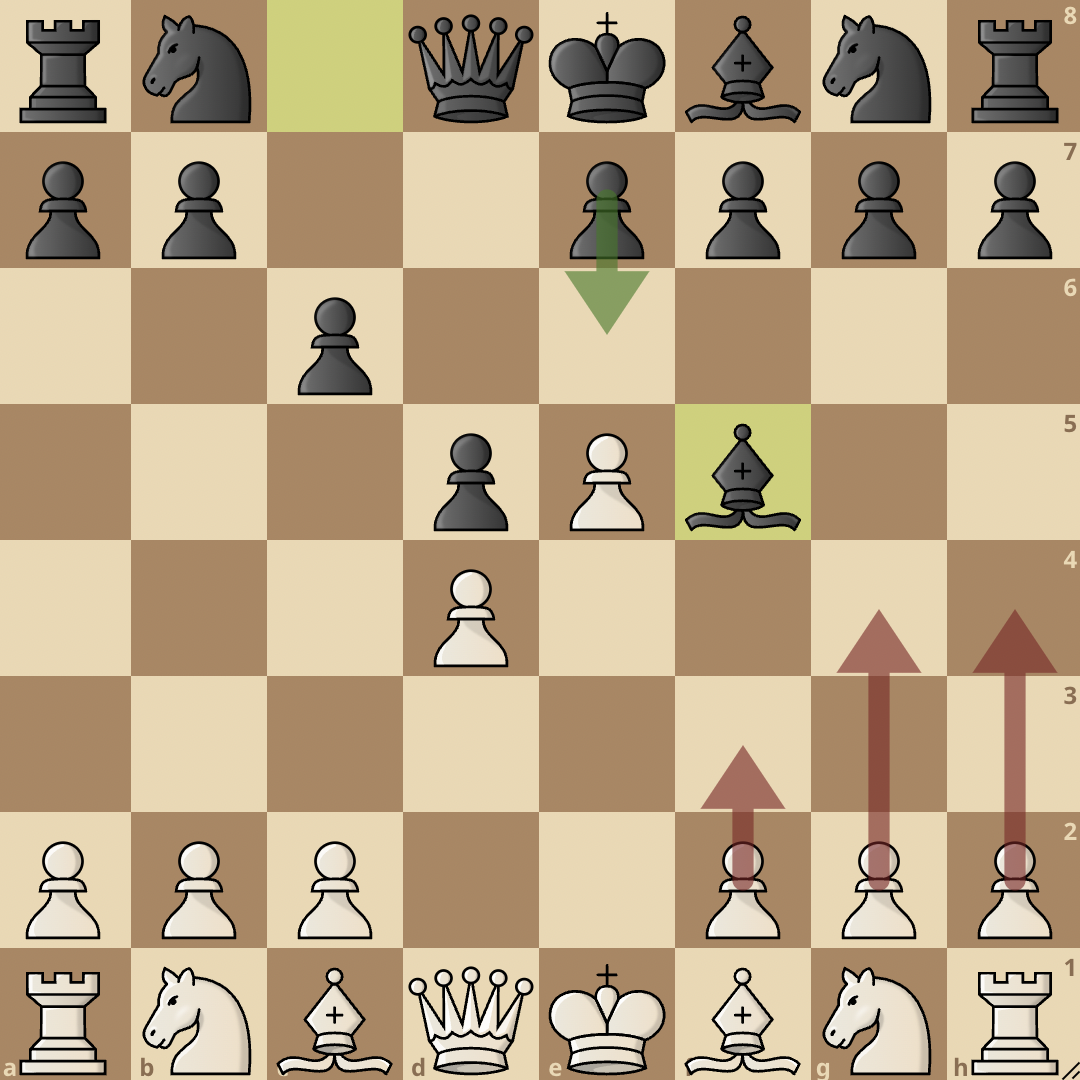
3…Bf5 is the most common response to the advance variation of the Caro-Kann.
From here White can choose to play the aggressive Bayonet Attack with 4. g4 Be4 5. f3 Bg6 6. h4 h5. In this line, White goes with an all-out pawn storm on the kingside.
However, the most popular line of the Advanced variation is the Short Variation. It starts with 4. Nf3 and Black replies with 4…e6. e6 closes the position and solidifies the d5 pawn.
White can decide to continue with either the commonly played Be2, a3, or c3. Each of these moves promises a solid position for both sides going into the middlegame.
3…c5

After the pawn advances with 3. e5, Black will play 3…c5 and challenge the base of the pawn chain.
While it is a principle that moving a piece twice in the opening is not ideal, it works here as White also pushed their e-pawn twice (e4 and e5).
3…c5 challenges the base of the pawn chain, and the most popular reply for White here is to capture the c5 pawn with 4. dxc5. Black now solidifies their d5 pawn with 4…e6 and prepares to capture the c5 pawn.
Trying to protect the c5 pawn will ruin White’s pawn structure on the queenside and Black will still end up winning it.
To show an example, if White plays 5. b4, the following sequence happens.
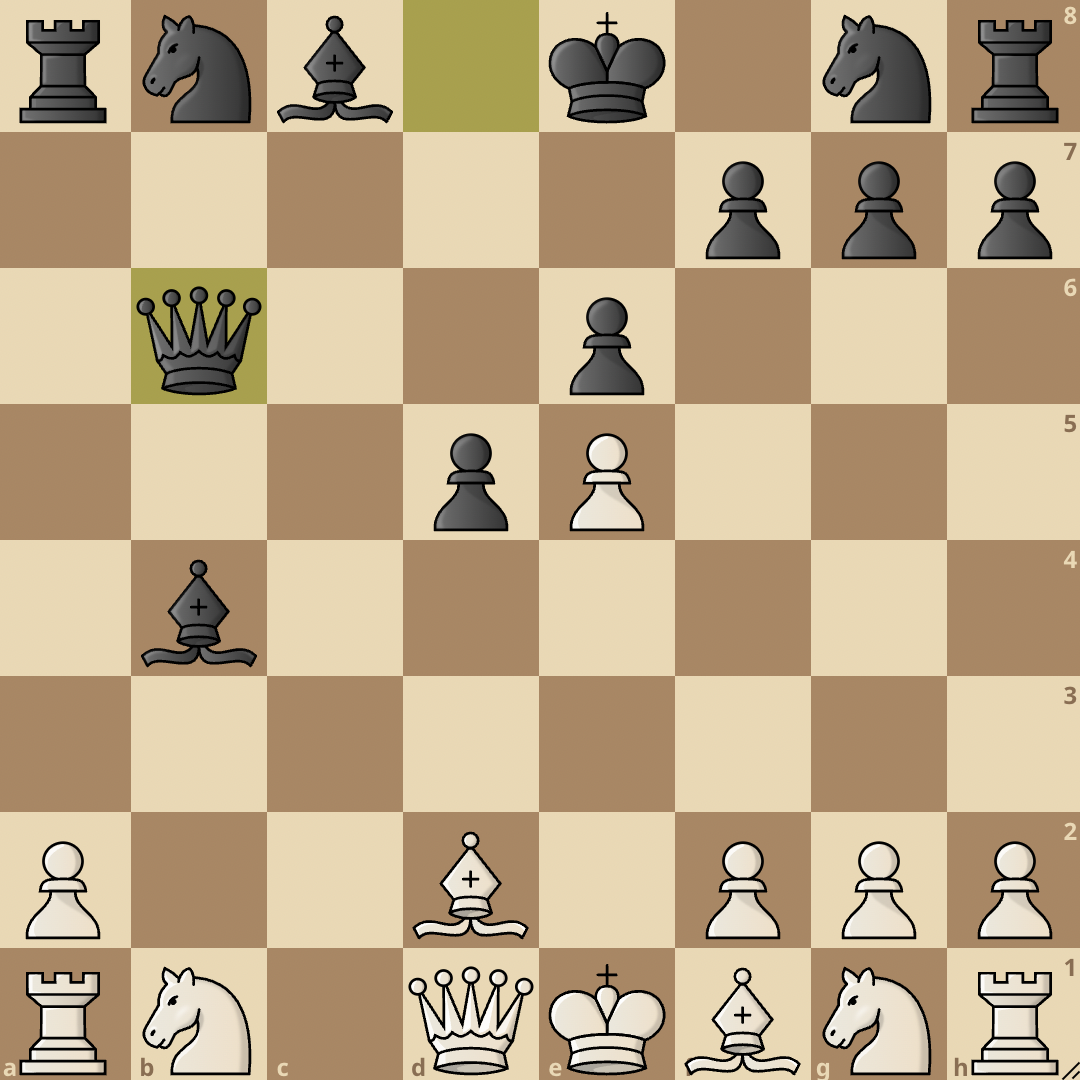
(5…a5 6. c3 axb4 7. cxb4 b6 8. cxb6 Bxb4+ 9. Bd2 Qx6) and after all this, Black is just better. See position above.
Therefore, defending the pawn is off-limits. The best move for White is to play 5. a3, and now if Black does not capture the pawn White will first play Nf3, and if Black still does not capture the pawn, White can finally defend it with b4.
After 5. a3, Black will almost always play 5…Bxc5 and the game continues with both sides developing their pieces to get ready for the middlegame action.
Successful Deployments
Touch the moves or move the board around for a better interactive experience.
Alexey Shirov v Anatoly Karpov, Las Palmas (1994)
Former World Champion Anatoly Karpov enjoyed playing the Caro-Kann and he displayed his mastery of the opening in his 1994 game against Alexey Shirov.
Alexander Alekhine v Savielly Tartakower, Kecskemet (1927)
Alexander Alekhine was a terror to behold in his prime. His mastery of different openings and tactics was legendary.
In this game against Savielly Tartakower, he displayed just why he was and is so highly regarded, as he dismantled Tartakower’s Caro-Kann.
Vasyl Ivanchuk v Viktor Korchnoi, Melody Amber Blind 2nd (1993)
At the absolute peak of his power, Korchnoi was known as “The Terrible”. This was because of his incredible style of play and the brutal way he dispatched his opponents.
Ivanchuk was also a beast of a player in his prime, however when the pair met in the 1993 Amber Blind Tournament, it was Korchnoi that emerged victorious.
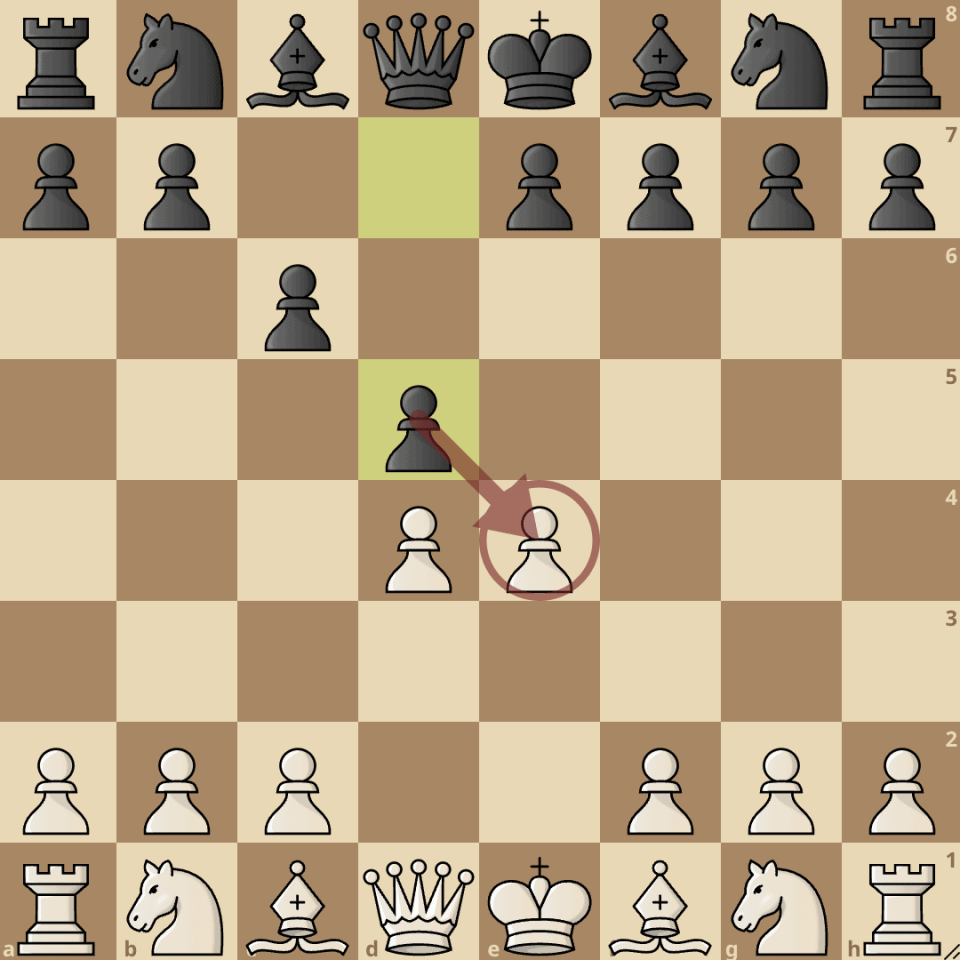




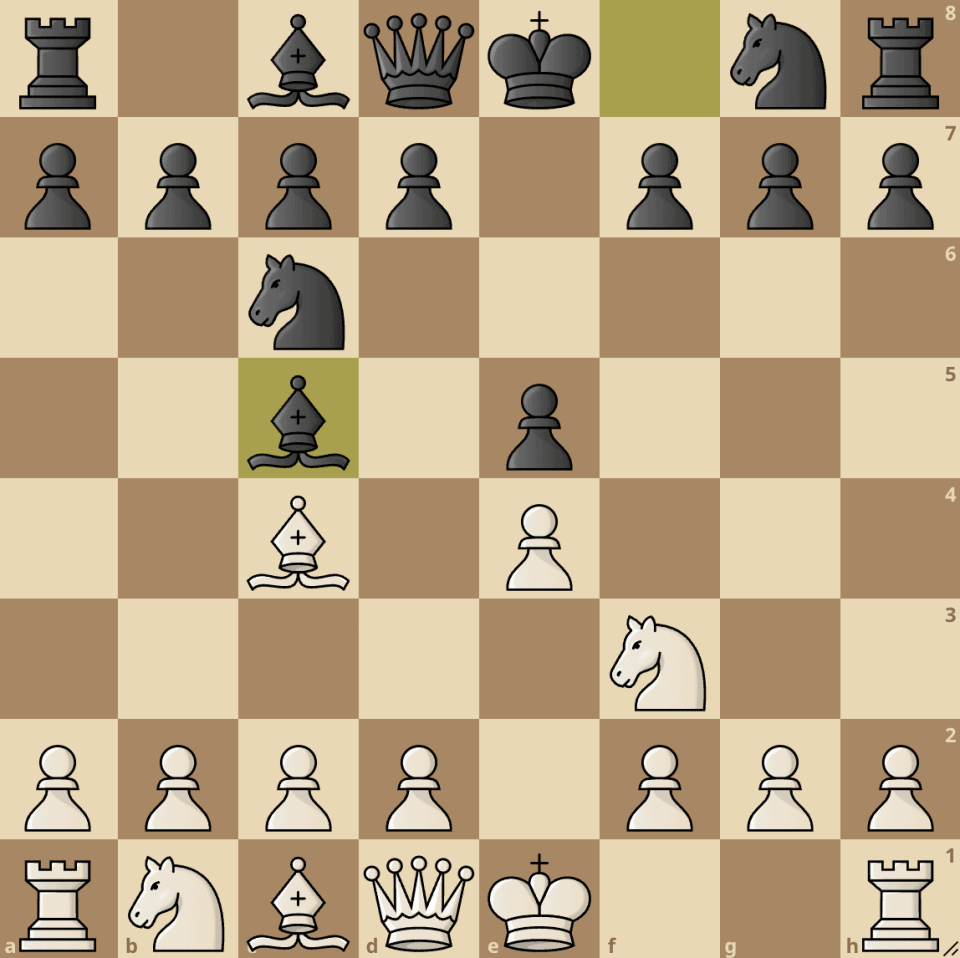

join the conversation